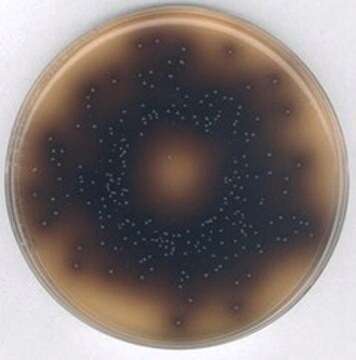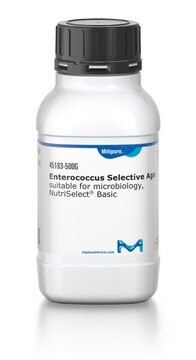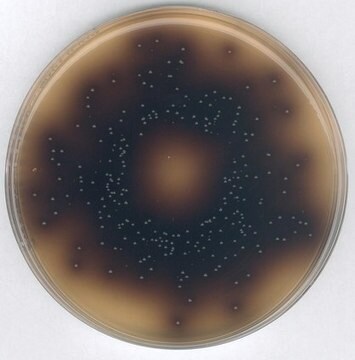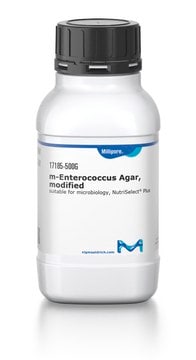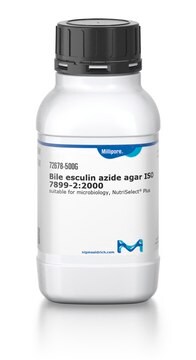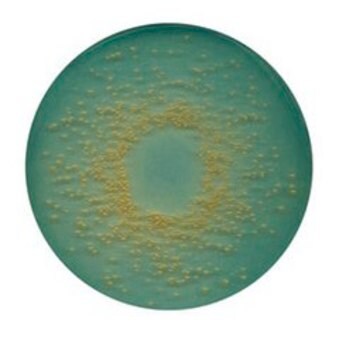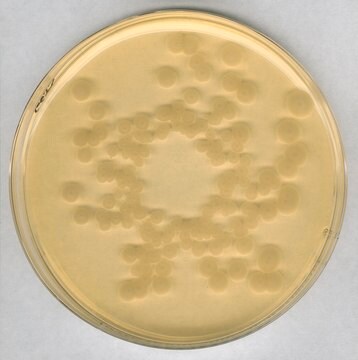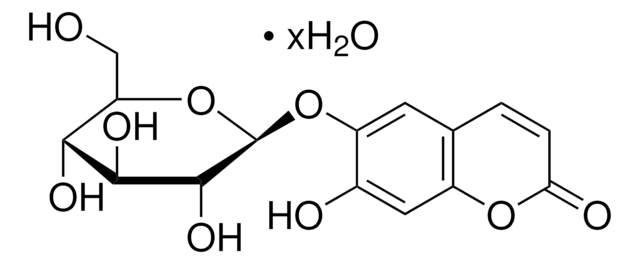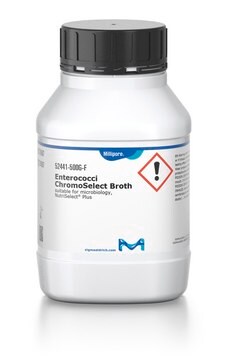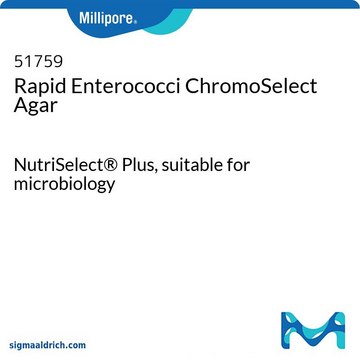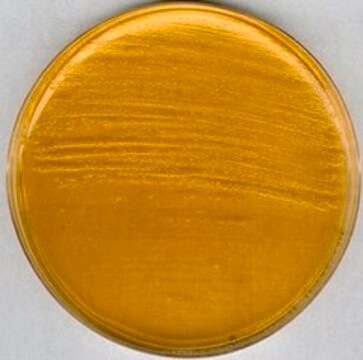48300
Bile esculin agar
suitable for microbiology, NutriSelect® Plus
Sinónimos:
Esculin Bile Agar
About This Item
Productos recomendados
Agency
according to ISO 10273:2017
Nivel de calidad
esterilidad
non-sterile
Línea del producto
BioChemika
formulario
powder
caducidad
limited shelf life, expiry date on the label
composición
agar, 15.0 g/L
esculin, 1 g/L
ferric citrate, 0.5 g/L
meat extract, 3 g/L
meat peptone, 5 g/L
ox-bile, 40 g/L
fabricante / nombre comercial
NutriSelect® Plus
técnicas
microbe id | specific enzyme detection: suitable
pH final
6.6±0.2 (25 °C)
aplicaciones
environmental
food and beverages
water monitoring
microbiology
idoneidad
Streptococcus spp.
selective and differential for Enterococcus spp.
Aplicación
Nota de preparación
Nota al pie de página
The designations basic, plus, or prime are added to indicate the quality control level, from basic quality control to standard QC plus to prime for full regulatory compliance.
Información legal
Código de clase de almacenamiento
11 - Combustible Solids
Clase de riesgo para el agua (WGK)
WGK 3
Punto de inflamabilidad (°F)
Not applicable
Punto de inflamabilidad (°C)
Not applicable
Choose from one of the most recent versions:
¿Ya tiene este producto?
Encuentre la documentación para los productos que ha comprado recientemente en la Biblioteca de documentos.
Los clientes también vieron
Nuestro equipo de científicos tiene experiencia en todas las áreas de investigación: Ciencias de la vida, Ciencia de los materiales, Síntesis química, Cromatografía, Analítica y muchas otras.
Póngase en contacto con el Servicio técnico